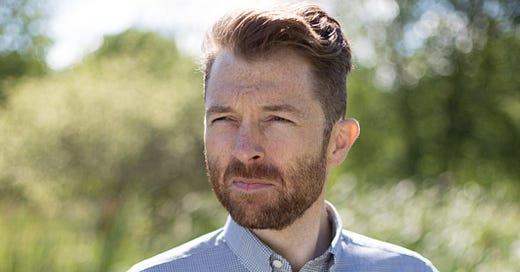It's been about a week since I felt compelled to weigh in on Ford's decidedly... interesting decision to throw its weight behind the supposed NACS charging standard -- a.k.a. the port that only Teslas have used before now. I clearly had thoughts and, if you missed 'em the first time around, they're right here.
Needless to say, this one evoked opinions from a lot of folks and I have to admit I was surprised at the volume of voices coming out on the "pro" side -- or at least the cautiously optimistic side.
In the spirit of spreading hope and balanced perspectives, I wanted to gather together a few of those takes and reasons for optimism, because they've definitely made me soften my position.
Accessibility
The first take that really opened my eyes was a suggestion from my friend Myriam Joire, who tweeted this my way:
This is an exceedingly great point. The North American flavor of CCS is, in actuality, two ports somewhat clumsily glued together: a round, J1772 with a pair of pins for fast DC charging tacked on below. That makes for a bulky, heavy plug at the end of a thick, heavy cable.
The burgeoning NACS standard plug is slimmer, cables far thinner and more manageable as well. For anyone dealing with limited mobility, this is a significant deal.
John Voelcker on Ford's "Brilliant Move"
John Voelcker is among the most respected names in EV journalism, so when he calls this a "Brilliant Move" in his piece for Car & Driver, it's worth paying attention.
John in particular sees this as a response to the mediocre (at best) reliability seen by the non-Supercharger networks, particularly Electrify America, and an opportunity to force them to raise their game.
That's very true, a point I openly conceded in my own piece. However, I fear that Tesla's charging reliability has less to do with magic sauce in the Supercharger network and more to do with the homogeneous nature cars that have heretofore used it. I wouldn't be surprised if we start seeing the same sorts of issues at Superchargers if all sorts of brands come to play with NACS, but only time will tell at that point.
PRNDL's Break-Down
Last but not least, Jordan Golson over at PRNDL took issue with… well, with everything I said. I'll let you parse the finer details for yourself.
At the end of the day, what we have here is another burgeoning format war. A common statement by many coming out in support of this is that the use of an adapter is no big deal, that no consumer will be bothered by this.
I disagree with that sentiment. Any time someone needs to explain why some cars have one plug and some cars have another, that will present another opportunity for a wary consumer to nope out of this brave, new EV world. Every time someone drives off and leaves their adapter hanging on the end of the cable, it'll be a needless point of frustration.
The ideal solution, in my opinion, would be for the US government to have mandate standardized plugs on all chargers for all EVs in the US, much like we've seen in Europe. Then, I believe, we'd have seen some real progress on charger ease of use, interoperability, and ultimate reliability.
But that, of course, is never going to happen. This shift to NACS may get us there, and in the long run hopefully it'll be a good thing, but I still believe it's only going to make the path between here and there unnecessarily bumpy.





What are your thoughts on GM signing on to NACS? Lots more to think about now. Seems like this is becoming a pretty powerful forcing function in adopting an actual standard. EV adoption is really in its infancy, so maybe this is still a good time to encourage use of the standard that is currently the most prevalent in NA.
If it becomes a viable standard, will the other charging providers be allowed to use / license the NACS on their systems? While this may cause angst among current CCS users, adapters are available in that direction, too.
Hey, Tim.
Appreciate the second article. I also have mixed feelings on this. As someone who has owned both a Tesla and an Ioniq5, I must say that the charging experience is so different. EVERY Tesla charge was seamless. Drive up, plug in, and walk away. That has NOT been my experience with the Hyundai. Even when it works correctly, it feels clunky. We were going to go on a longer drive to Aiden's college, and the sparsity of charge points and the mapping of those CPs for the Ionic made us actually decide to take his car instead.
So, ASSUMING it becomes that seamless with the Mach E, I was excited to hear about it. However, I'm a realist, and I just don't know if it will be that easy. I feel the Tesla engineers care more about their charging network and work harder at it than EA, which still seems to have issues.
Again, mixed feelings.